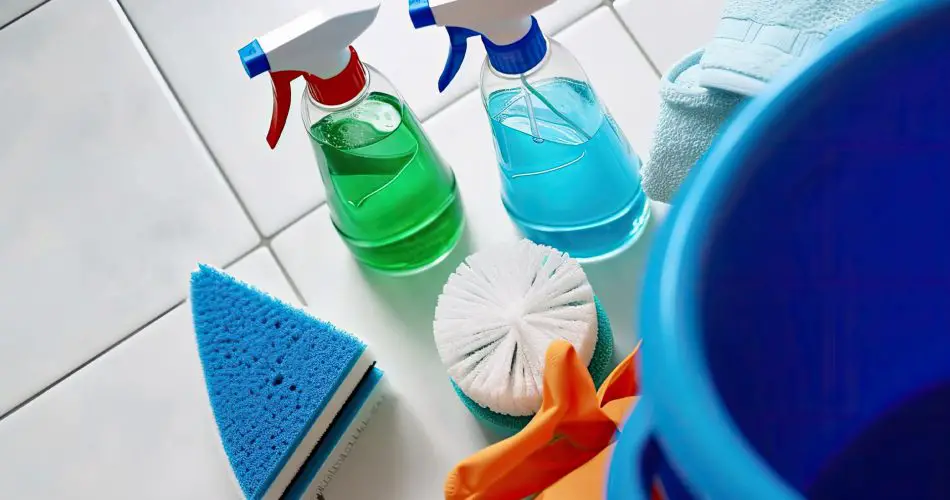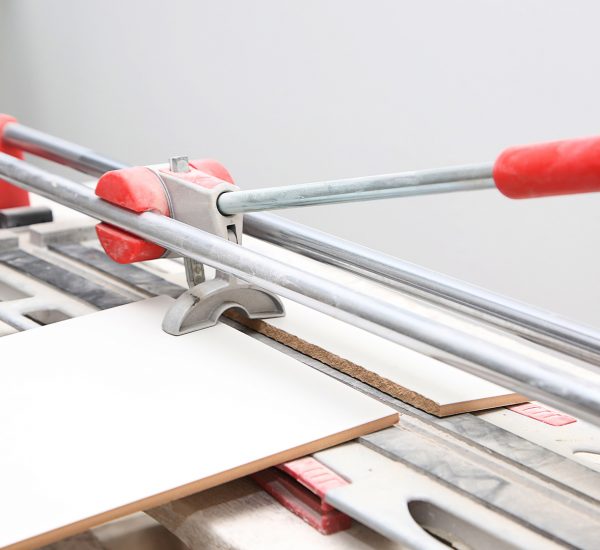Tiles are a popular choice for flooring and surfaces due to their durability and aesthetic appeal. However, over time, stains can accumulate, diminishing the tiles’ beauty. One common question that arises is whether bleach can be used to remove tile stains effectively. In this blog post, we’ll delve into the effectiveness of bleach as a stain removal option for tiles, explore proper usage and potential risks, and provide alternative methods to consider.
Effectiveness of Bleach on Tile Stains
Bleach, with its powerful oxidising properties, can be effective at removing certain types of stains from tiles. It is particularly useful for eliminating mould, mildew, and organic stains like coffee or tea. Bleach’s ability to break down organic matter and lighten discolouration can make it seem like a promising solution for tile stains.
Proper Usage of Bleach
If you decide to use bleach for tile stain removal, it’s crucial to follow these guidelines:
- Dilution: Dilute bleach with water according to the manufacturer’s instructions. Typically, a 1:10 ratio of bleach to water is recommended.
- Ventilation: Ensure proper ventilation in the area where you’re using bleach to prevent the accumulation of fumes. Open windows or use fans to improve airflow.
- Test on a Small Area: Before applying bleach to the entire stained area, test it on a small, inconspicuous section of the tile to check for any adverse reactions or discolouration.
- Application: Apply the diluted bleach solution directly to the stained tile or use a sponge or cloth to blot the affected area. Allow the bleach to sit for a few minutes, but avoid letting it dry on the surface.
- Scrubbing: Gently scrub the stain using a soft-bristle brush or sponge. Avoid using abrasive materials that could scratch or damage the tile surface.
- Rinse Thoroughly: Once the stain has lightened or disappeared, rinse the tile thoroughly with clean water to remove any remaining bleach residue.
Potential Risks and Precautions
While bleach can be effective, it’s important to be aware of the potential risks associated with its use:
- Discolouration: Bleach may cause discolouration on certain types of tiles or grout. Test it on a small area first to ensure compatibility.
- Fumes and Irritation: Bleach emits strong fumes that can be irritating to the eyes and respiratory system. Use it in a well-ventilated area and consider wearing protective gloves and eyewear.
- Bleach and Surrounding Materials: Be cautious when using bleach near surrounding materials, such as fabrics or wooden surfaces, as it can cause damage or fading.
Alternative Stain Removal Methods
If you prefer to avoid using bleach or if it proves ineffective for your specific stain, consider these alternative methods:
- Baking Soda and Vinegar: Create a paste using baking soda and water, apply it to the stain, and let it sit for a while. Then, scrub gently with a brush and rinse with water. For tougher stains, you can add vinegar to the baking soda paste.
- Hydrogen Peroxide: Hydrogen peroxide can be effective for removing tough stains. Apply it directly to the stain, let it sit for a few minutes, scrub gently, and rinse thoroughly.
- Commercial Tile Cleaners: There are various tile cleaners available on the market specifically designed to remove stains from tiles. Read the product labels carefully, follow the instructions, and test on a small area before applying it to the entire stained surface.
- Natural Remedies: Some natural remedies, such as lemon juice, vinegar, or a mixture of baking soda and water, can also help remove stains from tiles. These options are milder and may be suitable for lighter stains.
- Professional Cleaning Services: If the stains persist or if you’re unsure about using bleach or other methods, it may be best to seek professional tile cleaning services. Professionals have the expertise and specialised equipment to handle stubborn stains and restore the beauty of your tiles.
Conclusion
While bleach can be effective in removing certain types of tile stains, it’s important to consider the potential risks and take proper precautions when using it. Always test on a small area and follow the dilution and application instructions provided by the manufacturer.
If you’re uncomfortable using bleach or if it doesn’t yield satisfactory results, alternative methods such as baking soda and vinegar, hydrogen peroxide, commercial tile cleaners, or natural remedies can be viable options. Remember to read instructions carefully, test on a small area, and take appropriate safety measures.
For challenging or persistent stains, professional tile cleaning services can provide the expertise and advanced techniques needed to achieve optimal results.
Ultimately, the best approach to tile stain removal depends on the type of stain, tile material, and personal preference. Choose a method that suits your needs and maintains the integrity of your tiles, ensuring a clean and beautiful surface for years to come.




